The History of Robots
The History of Robots From Start to Finish
History of Robots

The History of Robots: Robots have been around a long time!
It may seem that the phenomenon of robots took root only in recent modern consciousness given the complex mechanisms involved in their making, but in fact, such devices have roots as far back as ancient Greece and in early Chinese dynasties. Descriptions of ancient robots date back to the 1st century. These devices are known as automatons, from the Greek word automatons, or “acting of one’s own will.” Essentially, automatons are non-electronic moving machines that mimic human or animal actions.
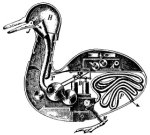
During the Han dynasty (200-300BC), accounts tell of a mechanical orchestra built by Chinese craftsmen. By the time the Sui Dynasty (581-18AD) similar automata had proliferated all over China. In Greece descriptions of bird automatons were recorded in Heron’s “Spiritalia” (150 BC), and records tell of the Greek mathematician Archytas of Taretum, a friend of Plato, who built a mechanical steam-operated pigeon in the 4th century AD. In 1206, a Muslim inventor named Al-Jazari constructed several automated machines, most famous of which was a boat containing four musicians that entertained royal guests during parties. You see now that the history of robots started long before the word "robot" was even invented.

In 1495, Leonardo da Vinci added to the long and colorful history of robots. He designed a complex humanoid automaton, which, as it appears in his sketches, could perform human-like motions such as sitting up, moving its arms and twisting its head and neck. The robot appears to be a warrior or knight, dressed in German-Italian medieval armor. This was only one of the several hundreds of designs and technical drawings rediscovered within the pages of two found manuscripts in 1950.
There are numerous examples of automated machines and robotic development in both ancient and more recent history, but the first truly modern robot to be added to the history of robots was invented by George C. Devol in 1954. This robot was called Unimate. In 1961, Unimate became the first industrial robot to work at the assembly line of a New Jersey General Motors plant. Programmed to take die castings from machines and perform welding on auto bodies, Unimate was obviously very far from the romantic notion of androids, or human-like robots.
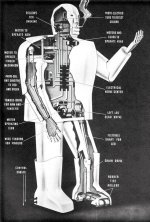
Closer to the concept of a humanoid robot was Elektro, built by Westinghouse Electric Corporation between 1937 and 1938. Elektro was seven feet tall and weighed 265 pounds. Not only could he walk by voice command, he also had a vocabulary of nearly 700 words, and talked using a 78-rpm record player. While on exhibit at the 1939 World Fair, Elektro smoked cigarettes, blew up balloons, distinguished between red and green light and moved his head and arms. At the following World Fair in 1940 he was joined by "Sparko", a robot dog that could sit, bark, and beg.
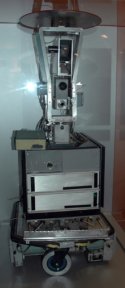
Up to the 1970s, the term artificial intelligence (AI) was in its infancy. Android robots were then designed to absorb every detail in their environment and carry out mathematical calculations to analyze what they “see.” Many of these ‘retro robots’ were therefore paralyzed after moving forward as little as a meter, overwhelmed with all the new input they received. In the 1980s and 1990s, a turning point occurred in the study of AI. It was proposed that that one didn’t need a highly accurate internal representation of the world to interact with it, an idea inspired by the movement of nature itself. This new perspective was revolutionary in further advancing the study of AI and robotics.
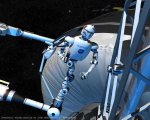
Many robots and androids have since delighted humans and helped make their lives easier. There is Robonaut, a humanoid robot operated from the Dexterous Robotics Laboratory at NASA's Johnson Space Center in Houston, Texas. Built in 2000, the remarkably dexterous robot has hands that can manipulate space tools and work in similar environments as suited astronauts. NASA has also announced plans to launch Robonaut 2 or R2 into space later this year. Robonaut 2 will be the first humanoid robot that will become a permanent resident of the International Space Station.
As NASA’s associate administrator for the Exploration Systems Mission Directorate Doug Cooke said of Robonaut, "This cutting-edge robotics technology holds great promise, not only for NASA, but also for the nation. I'm very excited about the new opportunities for human and robotic exploration these versatile robots provide across a wide range of applications."
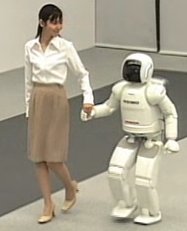
Then there is ASIMO, a 51 inch (130 cm) humanoid robot created at Honda's Research & Development Center in Japan. Short for “Advanced Step in Innovative Mobility," ASIMO can walk or run at speeds of up to 3.7 MPH (6 km/h). The robot can also detect the movements of multiple objects and assess distance and direction, enabling ASIMO to greet a person when he or she approaches. Other memorable humanoid robots to come out of Japanese technology are Kawada Industries’ HRP-2, the tea serving robot, who can also carry tables & apply panels to a wall, and Yamaha’s HRP-4C, an incredibly life-like fembot utilizing Yamaha's Vocaloid voice synthesis software which allows her to sing.
Click HERE to learn more about the history of robots from Wiki
From wooden pigeons to androids in space, the history of robots has definitely been a series of enormous leaps for mankind.